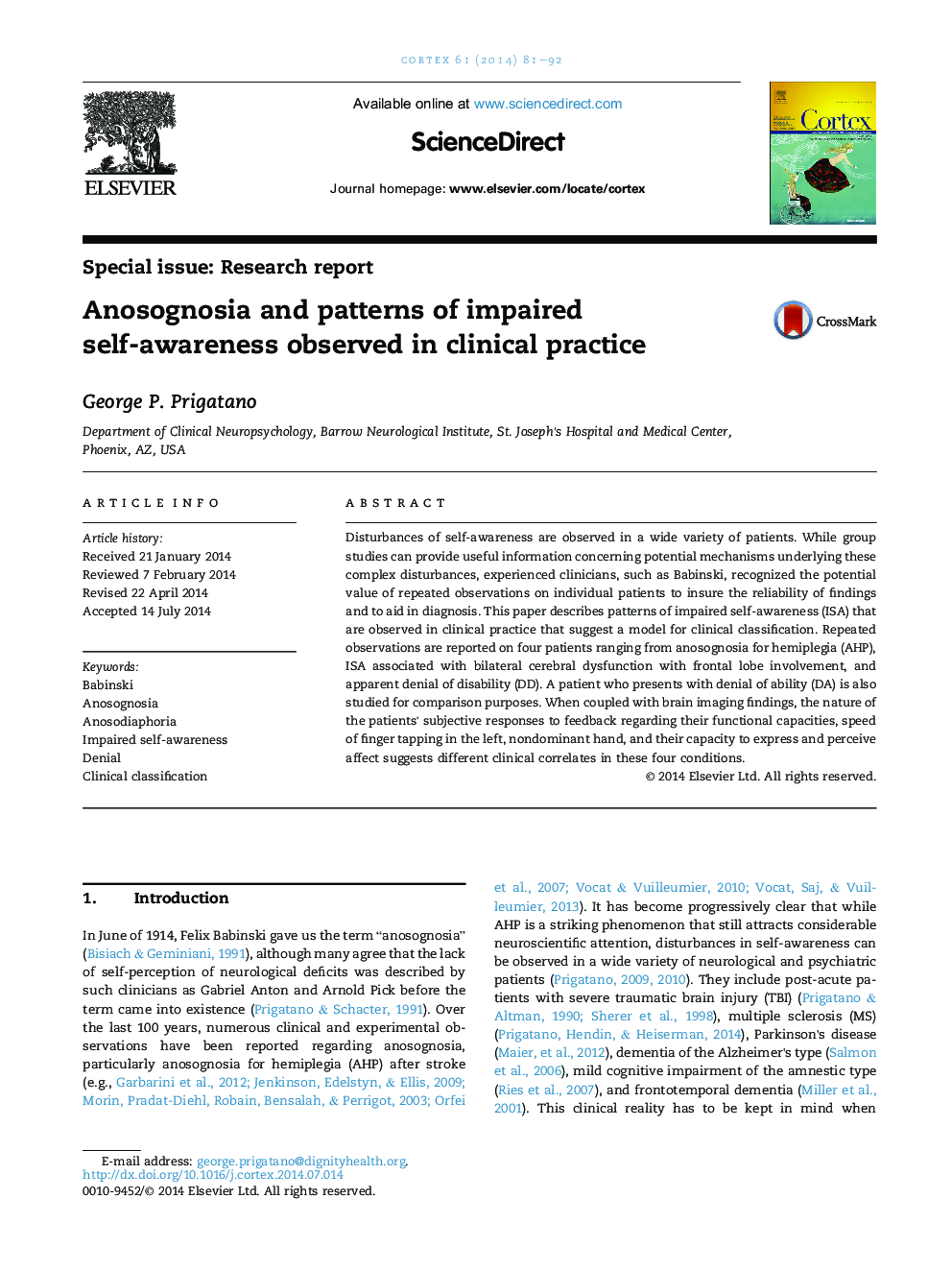| Article ID | Journal | Published Year | Pages | File Type |
|---|---|---|---|---|
| 7315047 | Cortex | 2014 | 12 Pages |
Abstract
Disturbances of self-awareness are observed in a wide variety of patients. While group studies can provide useful information concerning potential mechanisms underlying these complex disturbances, experienced clinicians, such as Babinski, recognized the potential value of repeated observations on individual patients to insure the reliability of findings and to aid in diagnosis. This paper describes patterns of impaired self-awareness (ISA) that are observed in clinical practice that suggest a model for clinical classification. Repeated observations are reported on four patients ranging from anosognosia for hemiplegia (AHP), ISAÂ associated with bilateral cerebral dysfunction with frontal lobe involvement, and apparent denial of disability (DD). A patient who presents with denial of ability (DA) is also studied for comparison purposes. When coupled with brain imaging findings, the nature of the patients' subjective responses to feedback regarding their functional capacities, speed of finger tapping in the left, nondominant hand, and their capacity to express and perceive affect suggests different clinical correlates in these four conditions.
Related Topics
Life Sciences
Neuroscience
Behavioral Neuroscience
Authors
George P. Prigatano,
